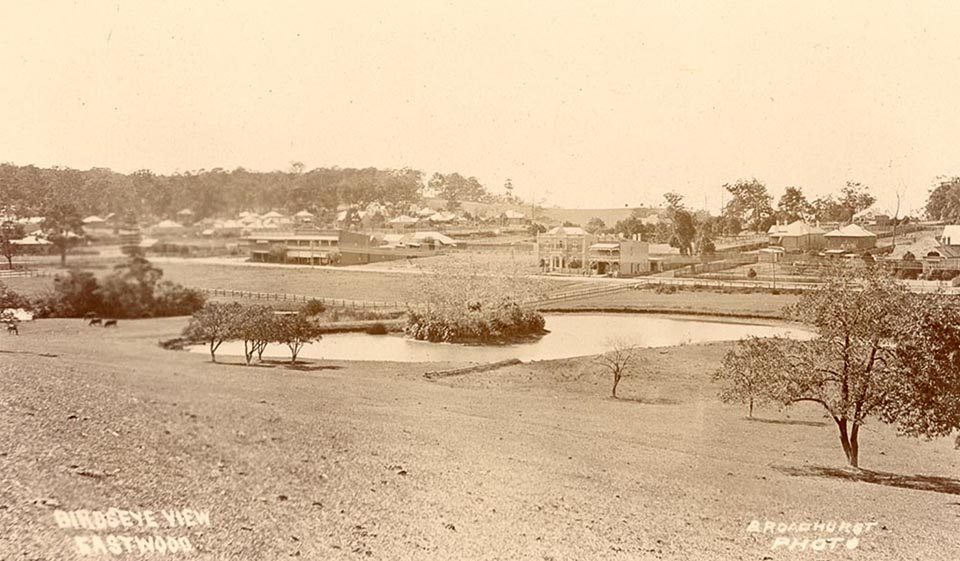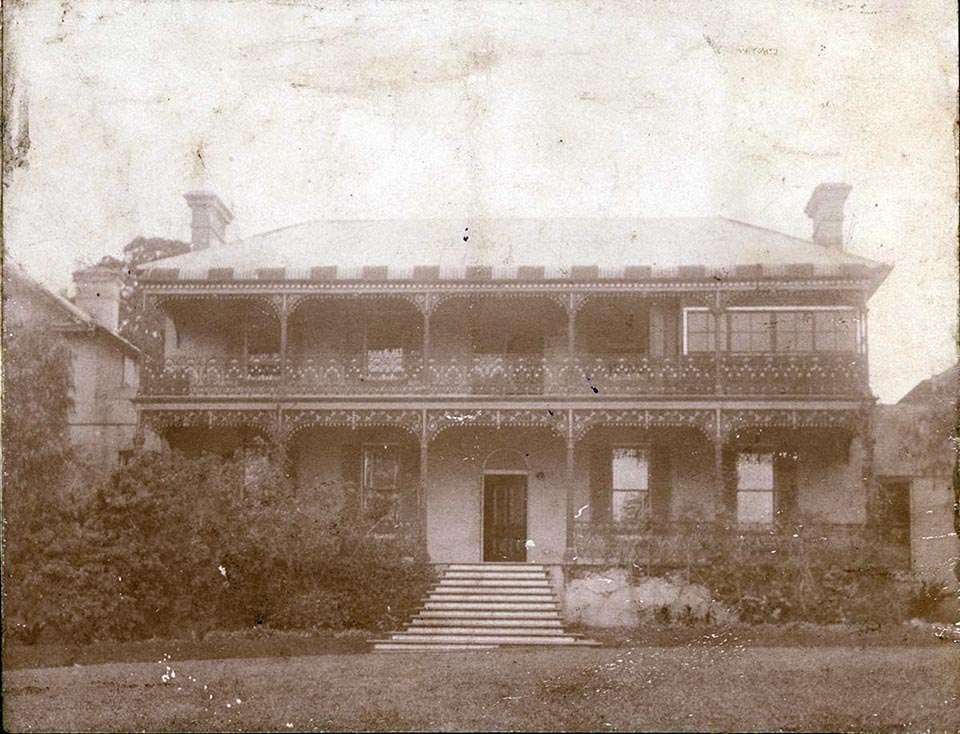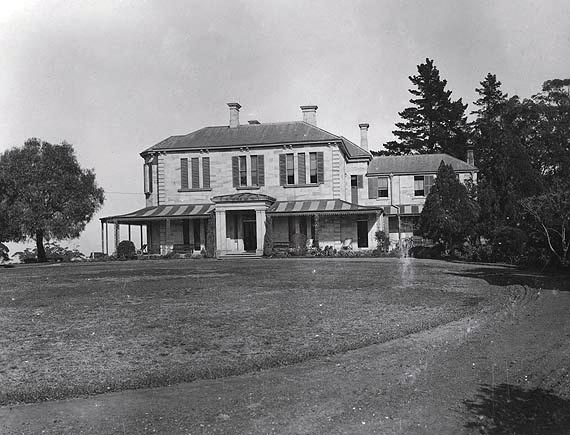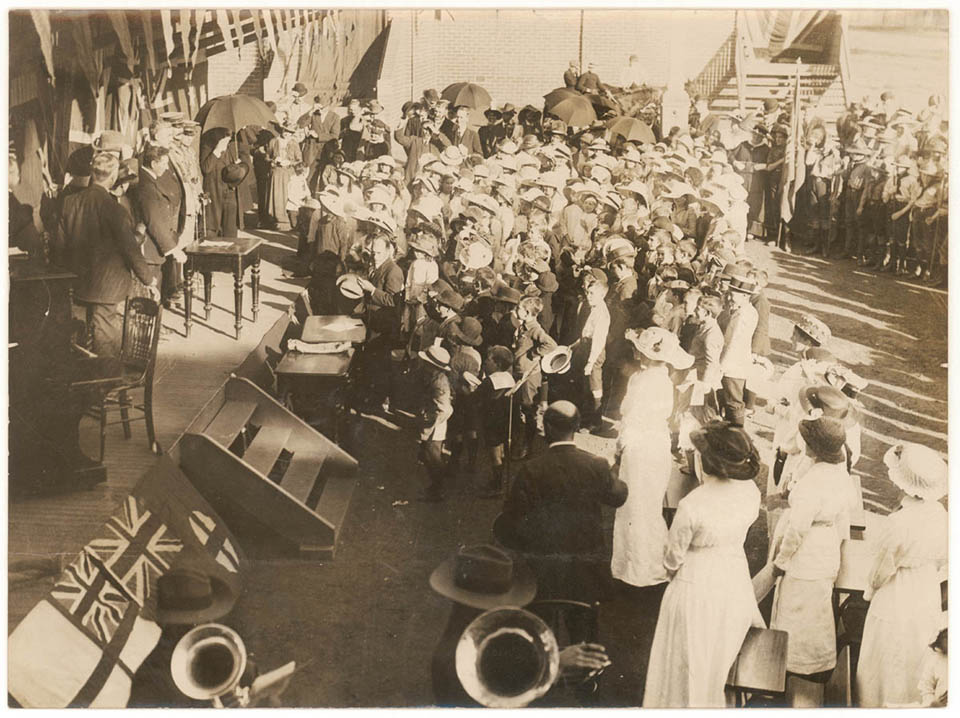The Dictionary of Sydney was archived in 2021.
Eastwood
Citation
Persistent URL for this entry
To cite this entry in text
To cite this entry in a Wikipedia footnote citation
To cite this entry as a Wikipedia External link
Eastwood
A train journey [media]from Sydney Central to Strathfield and thence north on the Hornsby rail line will bring a traveller to the suburb of Eastwood, some 21 kilometres from the city. Leaving the train to travel on to Hornsby and stepping out of the station on the east or west side, the visitor will see a busy suburban shopping centre, illustrating the fact that Eastwood developed around the railway station when the service began in 1886. However, the town's history goes back to the eighteenth century and even to earlier times, when the Wallumedegal Aboriginal people lived in the territory bounded by the Lane Cove and Parramatta rivers. The people were part of the Dharug group and they called their country Wallumetta.
Eastwood is one [media]of 16 suburbs of the City of Ryde and its population is over 14,000. The town's business area backs on to Terrys Creek, here restricted to a concrete canal, whose waters flow east into the Lane Cove River. This process was somewhat impeded when, in 1984, the waters overflowed into the Rowe Street shopping centre! The hills to the south of the town cause other small creeks, such as Archers Creek, to flow into the Parramatta River. North of the town, the land rises sharply to the edge of the Hornsby Plateau, causing one landowner to call his subdivision the 'Highlands Estate'.
On the western edge of Eastwood [media]is Brush Farm House. Before Victorian additions were made to it, this two-storey building, with its east and west wings, reflected the Georgian design of Old Government House, Parramatta. The house is sited on a knoll and has views of the Parramatta River to the south, distant Botany Bay and the nearby suburbs of Denistone and West Denistone. Views to the Dundas Valley, Parramatta city and the Blue Mountains are to the west. The north shore ridge and the adjacent suburb of Marsfield lie to the east. Of course, these hills are not mountains. The heights above sea level, given for local stations, show the landforms – West Ryde is on the plain at 30 metres, Eastwood Station near the creek at 68 metres, and Epping on the higher ground at 97 metres.
Settlement begins
In 1792, land along the Parramatta riverbank was granted by Governor Phillip to eight marines, with two of the grants in the Ryde area. Phillip called the area 'The Field of Mars'. Other land grants soon followed in the Ryde and Eastwood areas. The Lieutenant-Governor, Major Francis Grose, issued grants in 1794 to John Redman, Patrick Campbell, Thomas Bride and Zadoc Pettit, land that later formed part of Brush Farm. Surgeon William Balmain received 100 acres (40.4 hectares).
Private John Love received a 90-acre (36.4-hectare) grant from the acting Governor, Lieutenant-Colonel William Paterson, in 1795 and the present shopping and station areas occupy some of this land. The career of Private Love was not always smooth. According to the Sydney Gazette of 8 June 1806, he was found to have distilling equipment on his farm and so had to find bail money: it seems appropriate that the first and subsequent Eastwood Hotels were built on John Love's land. Early attempts at farming on these small grants by clearing land and planting maize, wheat and vegetables and perhaps keeping a few chickens, were not always successful and eventually the farms became part of larger estates owned by men with capital.
The Eastwood estates
Brush Farm House, Eastwood House and Denistone House are situated on estates important to the nineteenth-century history of Eastwood. Ryedale House, which was owned by the Darvall family, and The Hermitage, which was owned by John Blaxland, are adjacent properties outside the Eastwood area.
Briefly, Brush Farm [media]was first consolidated from small early farms by William Cox and purchased by Gregory Blaxland in 1807. Blaxland was a successful farmer, and, apart from growing crops and keeping farm animals, he is known for introducing buffalo grass for cattle fodder, cultivating grapes and making wine that won two medals from the Royal Society in England. History records him successfully crossing the Blue Mountains in 1813 in company with William Lawson and William Wentworth, and so opening the way for settlement at Bathurst and beyond. He built Brush Farm House, c1820, which still stands in Lawson Street. The council of the City of Ryde has overcome difficulties and has been praised for conserving and restoring the house and its garden from an almost derelict state, and making it a community treasure. Re-opening Day was Friday 7 April 2007.
John Love's 90 acres re-enters the Eastwood story when the property was bought in 1835 by William Rutledge, known as 'Terrible Billy Rutledge', probably because of his argumentative nature. It is believed that Rutledge built part of Eastwood House in 1840. The property was sold, and purchased by Edward Terry, in 1863. His land extended from Terry Road to Rowe Street and from Shaftsbury Road to Blaxland Road (east). It was adjacent to Brush Farm lands in the west. Later, he purchased more land to the north.
The single-storey Eastwood House [media]had fine views over the Eastwood valley before the town developed. Terry extended the house in 1865 and his home became the social centre of the district. Apart from farming activities, the garden and extensive orchards, the Eastwood property was known for its fine horses and many hunts were held, at least one of which was attended by the poet AB 'Banjo' Paterson. Terry had part of the creek on his property made into a series of picturesque lakes that gave the name to the present Lakeside Road. The lakes have since been filled in, and developed as sports grounds. One of these is the croquet lawn. The present croquet club began in 1935, using land and a heritage-listed clubhouse donated by the Terry family who were themselves keen croquet players. Eastwood House in Hillview Road is now part of the Marist College and the building, still with its cellar and attic, is the school's administration centre. Edward Terry was the first mayor of Ryde and later became a member of the New South Wales Parliament.
Denistone House [media]can be seen in the grounds of Ryde Hospital. The house, a fine two-storey stone building, is sited on a hill with extensive views to the Parramatta River from the rear of the house. The front elevation had views to the north-east. Its history goes back to a 1795 land grant and various owners who farmed there, until it was bought in 1872 by Richard Rouse Terry, brother of Edward Terry of Eastwood House, who erected the present building in 1874. The New South Wales government acquired the house in 1913 and a portion of land for a convalescent hospital for men. After World War I, local people proposed that the site become a Soldiers' War Memorial Hospital. After years of lobbying, fundraising and hard work, the building with the old stone stables and eight acres (3.2 hectares) of land became the Ryde District Soldiers' Memorial Hospital in 1934. It is now named Ryde Hospital. Its extensive gardens have gone, its views are limited and the historic house is surrounded by many buildings. However, the hospital and its staff still serve the now much greater population of the district. With the subdivision of the big estates near the station, Eastwood became a residential suburb.
The influence of Granny Smith's green apple
This delicious eating and cooking [media]apple could be said to be 'at the core' of Eastwood's Granny Smith Festival, which in 2010 celebrates its twenty-fifth year as a Ryde City Council event. The first festival was organised by Eastwood business people in 1957. Maria Ann Smith grew the apple on the 24 acres (9.7 hectares) bought in 1856 by her husband, Thomas, for £60. The farm, sited in today's Eastwood and Marsfield, bordered the Field of Mars Common, the present North Road and Abuklea Road and, to the south, it lay across today's Threlfall Street. Other orchardists helped to develop the apple and its cooking and eating qualities. It was finally produced in large quantities at the Government Experimental Station in Bathurst. The apple is now known worldwide and its bright green colour and sharp-sweet taste are enjoyed by many. Maria Ann Smith recognised the special qualities of the fruit and so she and the apple are celebrated each October at the lively Granny Smith Festival.
The railway and the Eastwood land sales
The [media]coming of the railway in 1886 changed the pattern of growth in Sydney's north-west. Eastwood was seen to offer buyers a pleasant residential area, with large blocks of land on which to keep a horse, cultivate a garden or build a tennis court, and easy travel by train to Sydney for employment. The owners of the big estates set about subdividing their land but it was many years before all blocks were sold. Federation-style houses and gardens of this period can still be seen. California bungalows followed, then postwar housing and now larger, modern homes and some units and villas. A new type of consolidated housing has been built on the site of the old Eastwood Brickworks in Midson Road. This business supplied many bricks for local houses in the twentieth century.
The first train travelled from Sydney to cross the newly completed iron lattice-girder bridge over the Parramatta River, climbed the steep incline at Denistone and arrived at Dundas station. In 1887 the station's name was changed to Eastwood after nearby Eastwood House. The 'Short North Line' then proceeded to Hornsby and the Hawkesbury River, where it met with the main northern line. The timetable showed that a fast steam train would leave Dundas at 8.07 am and arrive at Sydney (Central) at 8.45 am. Main Camp, at the station site, was set up for railway workers, and a hotel and school provided. Later the single line was doubled, steam trains gave way to electric and several station updates occurred.
Passengers enjoyed a more leisurely service around 1900. A local story says that when the engine sounded its loud whistle as it came from Epping, the headmaster of the Brush Farm Home for Boys would board his sulky and be driven to the Eastwood station, while the stationmaster would be rung and advised to have ready a ticket and hold the train until the passenger arrived!
From village to suburb in the twentieth century
Blaxland's track, leading from Brush Farm to Kissing Point (Ryde), became Blaxland Road and then a section of the road became Rowe Street, the main street of the growing town. It was named after a prominent Sydney architect, Thomas Rowe, who had property nearby and who designed the first small St Phillip's church at Eastwood. A railway level-crossing near the station-master's house led to the east side where one of the shops built in 1911 still stands. The railway engineers provided a small timber 'occupation' bridge for the landowner south of the crossing. This later became Rutledge Street Bridge, now a six-lane concrete structure built in 1978.
In nearby Marsfield, the Eastwood Town Hall was built in 1911 to be close to a projected railway. But instead of a rail line, Epping Road was constructed. Although never the hub of Eastwood, the hall is still standing. Boundary changes meant that Marsfield and much of Eastwood became part of what is now the City of Ryde.
Black and white photographs of Rowe Street from the early 1900s show several two-storey shops with verandas over the footpath, a few single-story premises, and vacant land. Horses and carts provided road transport. Areas of forest existed along Shaftsbury and Balaclava roads. Eastwood Progress Association lobbied for a park in 1904 and received eight acres (3.2 hectares) in 1918. A School of Arts was founded in 1906 (now demolished) and churches and schools built before 1914. When the Great War began, men from Eastwood joined the forces and [media]a war memorial was later placed on a corner of the Eastwood Park. After the war, more homes were built, electricity arrived in 1923 and in 1927 the Duke of York Picture Theatre was opened. An early fire station was situated on the east side of the railway, and when a new station in Rowe Street was opened in 1924 it was a gala occasion for the town.
World War II interrupted the lives of all citizens. Postwar, the demand for houses grew and, with the arrival in Eastwood of migrants, mainly from Italy and Greece, housing needs became more urgent. New houses filled the paddocks, orchards and poultry farms disappeared, and some flats were erected near the station. Music and choirs were popular and a young Joan Sutherland sang in a concert opera performance at the Masonic Hall in 1947. The Eastwood Centre opened in 1976 on Rowe Street, on the site of the theatre and other buildings. In 1983 a plaza was constructed from The Avenue, along Rowe Street to West Parade. A granite fountain, a flagstaff, a vine-covered archway and cafes with outdoor seating enhance this popular plaza. A bronze plaque commemorates the 1806 arrival in Sydney of Gregory Blaxland who in 1807 became the owner of Brush Farm and the builder of Brush Farm House.
The 1990s saw the arrival of many people from Asia, particularly Hong Kong, China, Korea and south-east Asia. Restaurants and cafes specialising in Asian foods appeared, and the once-conservative town began a new phase.
The twenty-first century arrives
Eastwood is now a multicultural centre, with local schools educating children from all over the world. Grocery, meat, fruit and vegetable businesses sell all kinds of new items and banks and real estate offices cater for all. Sport is popular, with netball, football and cricket being played enthusiastically. There is no public swimming pool but many homes have their own. A modern library is near the station. Brush Farm House hosts art shows and other community events. Nearby is the Corrective Services Academy that trains officers and holds graduation ceremonies and occasional Open Days. Eastwood remains a pleasant residential suburb with history and heritage giving it a real sense of place.
References
MCI Levy, Wallumetta: a history of Ryde and its district 1792 to 1945, Ryde Municipal Council, Ryde, 1947
Bernard Giuliani, Eastwood Scrapbook, Marist Publishing, Drummoyne, 1988
Kevin Shaw (ed), Historic Ryde: a guide to some significant heritage sites in the City of Ryde, Ryde District Historical Society, Ryde, 2002
Megan Martin, A pictorial history of Ryde, Kingsclear Books, Alexandria NSW, 1998
'Our history', Eastwood Croquet Club website, http://eastwoodcroquetclub.org.au, viewed 26 November 2010










